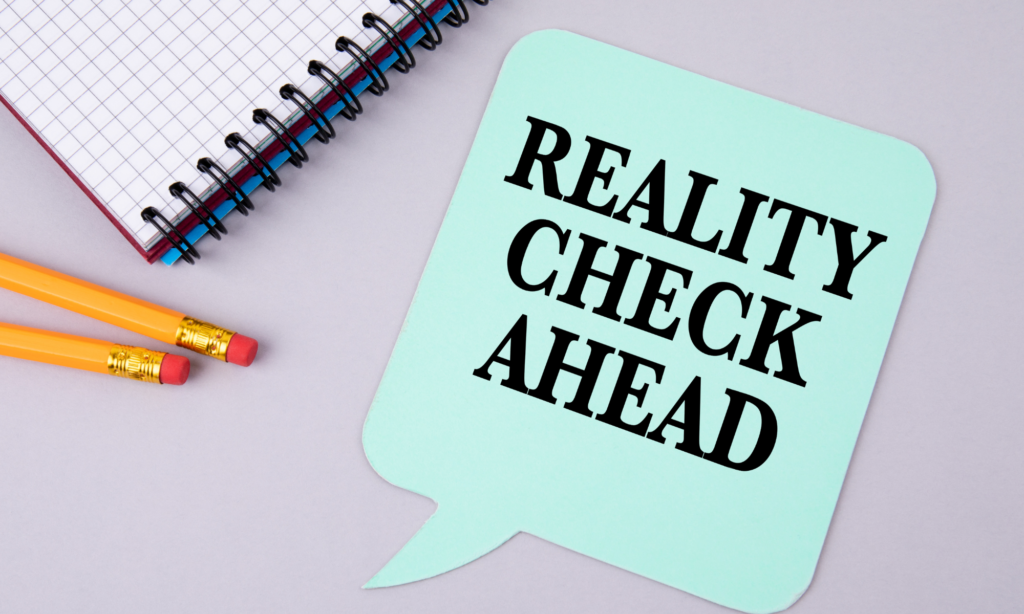Finding out how to eliminate self-doubt as a student can be a major challenge.
What if I don’t pass my next exam?
Or, heaven forbid, if I end up with a lousy grade?
Then all my dreams of completing my degree and landing my dream job will go down the drain! There is only one way out: You must focus on how to eliminate self-doubt and fear.
As you read these questions, you can feel your heart racing, and those pesky negative thoughts are exactly what occupy your mind, right?
Whether you find yourself questioning your abilities, drowning in the overwhelming workload of your studies, or constantly comparing yourself to your fellow students, self-doubt can become a real mental burden that chips away at your self-confidence.
But don’t give up just yet!
The silver lining is that self-doubt is actually a normal part of the learning process, and with effective strategies, you can conquer it.
That’s precisely why I’ve put together this article with 7 invaluable tips on how to overcome self-doubt and fear just for you. They’ll help you silence that critical voice in your head and tackle your upcoming study tasks with a renewed sense of enthusiasm. So, let’s dive right in and kick self-doubt to the curb!
Step 1: Recognize and Identify Your Self-Doubts
The initial stride on how to overcome self-doubt and fear is acknowledging its presence and realizing that it’s a completely normal and human experience.
Self-doubts act as a defense mechanism, shielding us from the potential sting of failure. In a healthy dose, they can even be a catalyst for motivation, propelling us to give our best and refine our skills to bolster our self-confidence.
However, when doubts and fears overpower us, they can hinder our performance and become a heavy burden.
The first step on how to overcome self-doubt and fear is to consciously acknowledge and precisely identify its triggers. It’s easy to initially attribute it to a general fear of exams, but it’s crucial to delve deeper within yourself.
- Which specific exam evokes this unpleasant sensation?
- What is it about this particular exam that instills fear in you?
- What specific outcome are you afraid of and why?
By gaining a clearer understanding of your mental barriers, you can directly confront your self-doubts and ultimately fight them.

Step 2: Your Thoughts Don’t Define Reality
When it comes to assessing our own abilities, we often let our feelings cloud our judgement. It’s crucial to recognize that our emotions don’t always reflect the objective reality of our competence.
To conquer self-doubt and free yourself from feeling inadequate, it’s essential to separate our emotions from the objective evaluation of our abilities.
Take a step back and try to assess yourself on a rational level. Jot down your past achievements and identify your strengths. You might even consider starting a success journal to track your progress.
When self-doubt starts to creep in again, referring to your journal can provide a genuine confidence boost.
However, especially when you’re caught in the throes of self-doubt, recognizing your strengths can be challenging.
In such instances, seeking honest feedback from mentors, professors, or fellow students can be immensely helpful.
Oftentimes, we tend to be our own toughest critics, while others can offer a more objective assessment, offering a clearer perspective of our actual skills.
This enables you to better identify areas that require improvement and differentiate them from minor distractions that you might unnecessarily obsess over.

Step 3: Create a Worst-Case Scenario to Eliminate Self-Doubt
Hold on a second! I know I’m already caught up in my worries, so why should I bother sketching out a specific worst-case scenario?
Well, here’s the thing.
When you take a moment to consider the absolute worst outcome in this situation, it triggers your mind to start thinking about solutions almost automatically.
And these small steps towards finding a solution are exactly what you need to combat your worries and overwhelming feelings. Besides, is your worst-case scenario, which is highly unlikely to even happen, really so catastrophically awful that there’s no way out?
Let’s say you actually fail the statistics exam. What’s next? You’ll have to retake it! Sure, it’s not the most enjoyable experience, but it’s not the end of the world either. Life goes on.
Visualizing the negative doesn’t make your thoughts even more negative – quite the opposite, in fact.
If you do encounter a setback, you’ll be emotionally better prepared to handle it.
The ancient Stoics like Seneca and Marcus Aurelius understood this well. For them, visualizing the worst-case scenario was an integral part of their daily meditation practice.
Step 4: Develop Your Self-Confidence
When it comes to overcoming self-doubt, a healthy dose of self-confidence is absolutely essential. But let’s be honest, it’s easier said than done, right? How to overcome self-doubt and fear? How can you actually build more self-confidence and conquer your self-doubts?
In this context, you’ve probably come across the concepts of positive thinking and affirmations. And guess what? Scientific research has shown that they work, at least to some extent.
So, it won’t hurt to give yourself some positive pep talks. However, I firmly believe that taking proactive steps will lead to even greater success (and shrink the foundation of your self-doubt, wink).
Let’s revisit the statistics exam, which was like the final boss and a major source of self-doubt for many students during my studies.
If you find yourself tormented by thoughts of potential failure, here’s my tip: Prepare for the exam as thoroughly as possible.
I know it may sound mundane, but trust me, from my own experience, it’s the best way to combat self-doubt. Being well-prepared increases your chances of passing the exam significantly.
But what if you’re completely clueless about dispersion parameters and scale levels? In that case, passing the statistics exam might seem like a distant dream. However, why not tackle exercise 1.5 for your next tutorial? Give it your best shot and then discuss it with your tutor.
The principle is crystal clear: Instead of facing an overwhelming task head-on, break it down into smaller, manageable subtasks.
As you successfully complete these subtasks, your self-confidence will naturally grow, and that nagging inner critic in your head will gradually quiet down.

Step 5: Reach Out for Support
Do you ever feel like you’re the only one dealing with your worries? Your fellow students seem to be unaffected by crippling self-doubt, and no one dares to talk about this uncomfortable topic.
But here’s the thing: that’s precisely the problem! Many students try to handle their concerns alone or simply push them aside. Unfortunately, that approach doesn’t lead to much progress.
Wouldn’t it be so much easier if you could openly address your fears? By doing so, you can support one another and provide much-needed encouragement.
When self-doubt starts taking over your thoughts and impacting your quality of life, it’s a clear sign that you should seek support.
It’s truly amazing what a difference it can make to realize that you’re not alone in your doubts and that others have gone through similar experiences. Reach out to people you trust in your circle, such as your friends or your family.
They might help you in finding out how to eliminate self-doubt because they have done it themselves.
Additionally, universities and colleges often have resources like psychological counseling services with trusted professionals who can lend a helping hand. Remember: Every worry can be overcome, even if it may not seem that way at first.
Step 6: Embrace Failure as an Opportunity for Growth
Even if you didn’t pass an exam, had a mental block during an oral exam, or had a disastrous presentation in a seminar, it’s important not to define yourself by those failures.
Instead, see them as chances for learning and personal development. Remember, nobody is immune to failure, and even the most successful individuals have faced numerous obstacles on their journey.
Stephen King’s book “Carrie” was rejected by 30 publishers before it finally got published in 1974.
Tim Ferriss’ book “The 4-Hour Workweek” was rejected 25 times.
And even the manuscript for Harry Potter faced rejection 12 times. J.K. Rowling even received feedback like, “You do realize you will never make a fortune out of writing children’s books?”
But they didn’t let those setbacks define them or stop them from pursuing their dreams.
By accepting failure as a normal and necessary part of the learning process, you can free yourself from the fear of making mistakes and self-doubt.
Take the time to analyze and reflect on what went wrong in those challenging situations. Use that reflection to identify areas for improvement and develop an action plan for overcoming similar challenges in the future.
Remember, failure doesn’t have to be the end of the road. It can be a steppingstone towards growth and success. So, don’t be discouraged by setbacks.
Embrace them, learn from them, and use them as opportunities to become a stronger and more resilient individual. Keep pushing forward, keep learning, and keep growing.

Step 7: Celebrate Your Progress and Every Little Success
And finally, it’s time to celebrate! Take a moment to rejoice in your progress and success, no matter how small they may seem.
Give yourself credit for the efforts you’ve put in, the hard work you’ve invested, and the achievements you’ve attained.
By rewarding yourself for reaching milestones, you’ll give your self-confidence a well-deserved boost and foster a positive mindset.
Remember, finding out how to eliminate self-doubt is a continuous journey, and every step forward is worth celebrating! So, let’s give a big “Whoop Whoop!”
